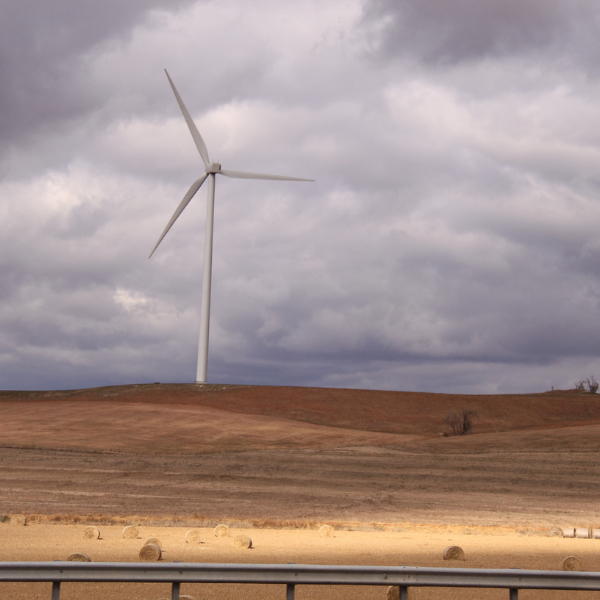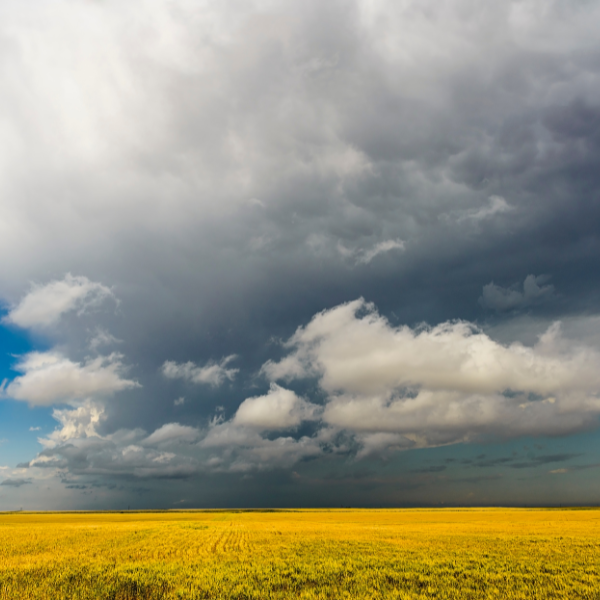Nurturing Prosperity Through Weather Wisdom: The Kansas Mesonet Rooted in Research Excellence
 Amidst the vast arid and semi-arid plains of Western Kansas, where agriculture is both a livelihood and a challenge, the Kansas Mesonet has stood the test of time, providing weather insights and reporting since 1969. Born from the collaborative efforts of the K-State Research & Extension and a network of dedicated partners, this intricate web of weather monitoring stations is not merely a collection of instruments; it's a lifeline for farmers, agribusinesses, and communities navigating the complexities of the region's weather patterns.
Amidst the vast arid and semi-arid plains of Western Kansas, where agriculture is both a livelihood and a challenge, the Kansas Mesonet has stood the test of time, providing weather insights and reporting since 1969. Born from the collaborative efforts of the K-State Research & Extension and a network of dedicated partners, this intricate web of weather monitoring stations is not merely a collection of instruments; it's a lifeline for farmers, agribusinesses, and communities navigating the complexities of the region's weather patterns.
The Western Kansas Research-Extension Centers publish monthly weather data summaries and still hosts Kansas Mesonet stations in Colby, Hays, Garden City, and Tribune. But did you know you can access real-time weather data from more than 60 environmental monitoring stations across Kansas?
In this blog post, we'll delve into the origins of the Kansas Mesonet, its meticulous care, and how it provides invaluable data for farmers, agribusinesses, and rural communities.
The Genesis of Kansas Mesonet:
 The foundation of the Kansas Mesonet lies in the K-State Research & Extension weather stations established in 1986. Initially rooted in research centers and experimental facilities, these stations, often co-located with National Weather Service Cooperative Observing Stations, laid the groundwork for what would become a state-of-the-art network of weather monitoring stations–the mesonet. Over the years, the collaboration has expanded to include key stakeholders, further enriching the mesonet's capabilities.
The foundation of the Kansas Mesonet lies in the K-State Research & Extension weather stations established in 1986. Initially rooted in research centers and experimental facilities, these stations, often co-located with National Weather Service Cooperative Observing Stations, laid the groundwork for what would become a state-of-the-art network of weather monitoring stations–the mesonet. Over the years, the collaboration has expanded to include key stakeholders, further enriching the mesonet's capabilities.
Site Selection and Standards:
Each weather station within the Kansas Mesonet is strategically located, adhering to the World Meteorological Organization (WMO) guidelines. Site selection involves carefully considering exposure and a commitment to placing stations where automated weather data is lacking. These long-term sites, often on private land with landowner permission, utilize research-grade instruments installed at WMO-recommended standard heights. Some stations even feature a second wind monitor at the 10m height for enhanced precision.
Meticulous Site Maintenance:
The reliability of the Kansas Mesonet hinges on the dedication of technicians from the Kansas State University Weather Data Library. Regular site visits, conducted at least twice a year during the Spring and Fall, ensure that the stations operate at the highest standards. During these visits, a comprehensive inspection covers sensors, data loggers, communications, and power supply systems. If any component falls short, it is swiftly replaced, with the faulty sensor sent for repair or recalibration. This commitment to precision extends beyond the technical aspects, as the overall site conditions, including fencing, grass cover, and surrounding fetch areas, are meticulously inspected to guarantee accurate and representative measurements.
Supporting Agriculture and Beyond:
The data collected through this meticulous process is not just numbers on a screen; it's a lifeline for farmers, agribusinesses, researchers, and rural communities. By providing real-time insights into weather conditions, the Kansas Mesonet empowers decision-makers with the information needed for sustainable agricultural practices, risk mitigation, and emergency preparedness.
The Kansas State University Weather Data Library, the behind-the-scenes hero keeps a close eye on all weather stations through data modems at each site. Scattered across the plains, these stations are powered by solar energy and battery storage, ensuring they're always ready to report on the ever-changing weather patterns. The Mesonet reports on solar radiation, wind, precipitation, barometric pressure, soil temperature, evapotranspiration and more. You can access this data at the Kansas State University Mesonet website.
In the dynamic landscape of Western Kansas, the Kansas Mesonet goes beyond just reporting the weather. From its humble beginnings as research-oriented weather stations, it has evolved into a vital network that shapes the decisions of those who rely on the land. The Kansas Mesonet, deeply rooted in research and collaboration, continues to be a driving force in supporting the thriving agricultural communities of Western Kansas.
Reference: Kansas Mesonet, 2017: Kansas Mesonet Historical Data. Accessed 30 June 2017, http://mesonet.k-state.edu/weather/historical